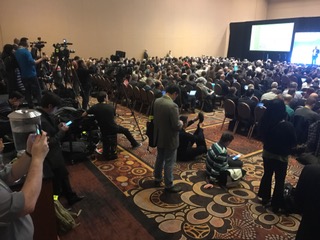When Apple launched the original iPhone in 2007 one of the innovative features was to embed an accelerometer in it – becoming one of the first to build the technology into a mobile phone. We had been using accelerators before this, in defense and industrial applications or to do things like deploy airbags in vehicles. We had even begun using them to protect hard drives in laptops when the laptop was accidentally dropped but we hadn’t seen them utilized in what I call consumer facing applications. In 2006, Nintendo launched the Wiimote which was the first widespread consumer device to incorporate the technology. By embedding an accelerometer into the device, the Wii gaming system could digitize the physical motion made by the player and subsequently incorporate it into the gaming environment. The line between what happens in the physical world and the digital world was starting to blur.
Later that year Nokia would announce the N95 – the first smartphone to utilize an accelerometer and the following year Apple would follow suit. At the time, the primary focus was switching screen orientation from portrait to landscape. The Apple app environment wouldn’t open to 3rd party developers for another eight or nine months.
At the time, the accelerometer added roughly seven dollars per axis of motion capture. In other words, to switch screen orientation from portrait to landscape added about fifteen dollars to the bill of materials of the iPhone. Fast forward to today and we don’t even price accelerators per axis of motion. I’m hearing price ranges for accelerometers and gyroscopes that suggest an equivalent price per axis of motion of well under fifty cents.
Today we are producing nearly a billion and a half smartphones and two hundred million tablets each year. As a result we have created massive economies of scale which have driven down key sensor prices significantly over the last five years. I feel like the marginal cost of sensor components embedded in wearables today is approaching zero. Certainly this seems to be the case in some of the products I’m seeing. The retail price for the exact same item is only about ten or fifteen percent higher when it includes sensors. Companies are recouping invested capital in R&D, but the marginal cost of the sensors is approaching zero. This will drive sensors into more and more things and with the marginal cost going towards zero, that trend will accelerate now.


